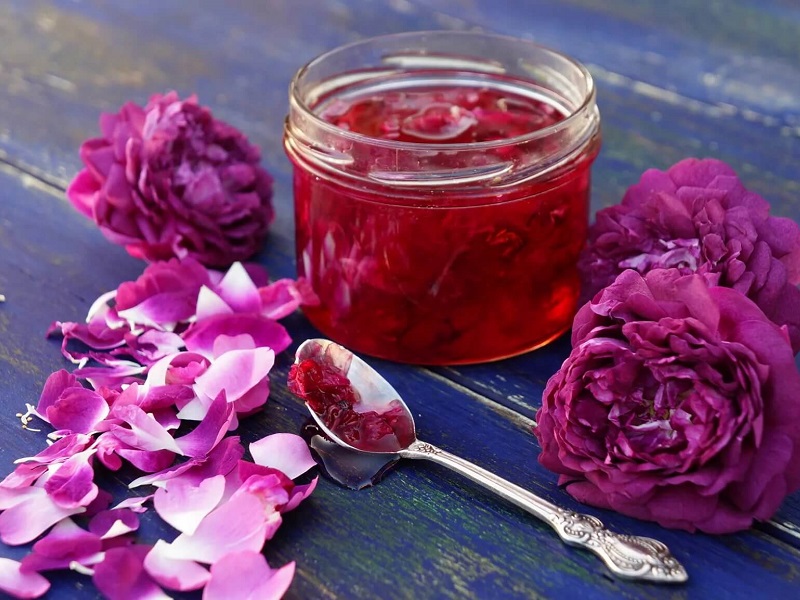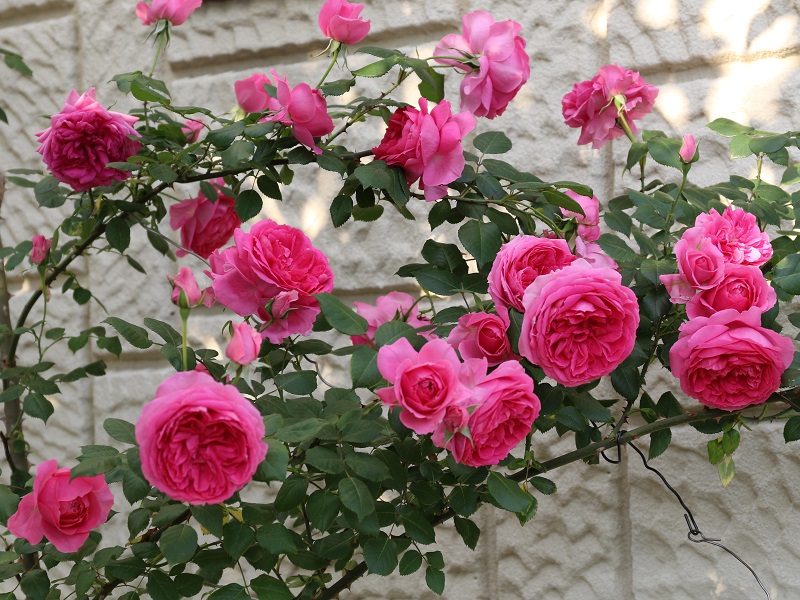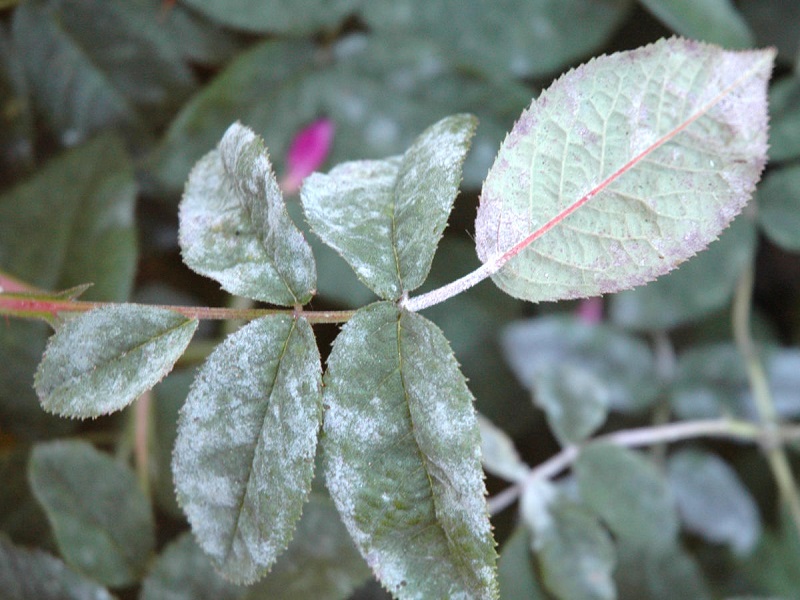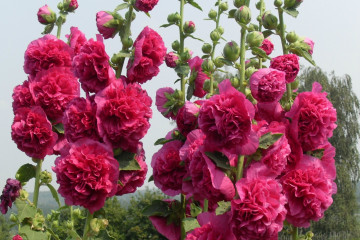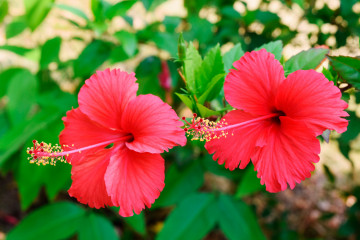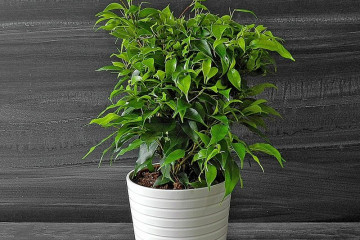What is a tea rose, differences from the usual, rules of care
Content:
The tea rose is an overseas guest who came from distant exotic countries. She is called the "queen of flowers" because she delights in the power of her scent and visual appeal. Any gardener would like to improve his garden plot and start growing such a wonderful flower. But for this you need to provide optimal conditions for the growth and development of culture, having previously familiarized yourself with them.
Tea rose - what is it
The plant is popular with gardeners, is the main character in many garden plots and goes well with other crops in vibrant compositions. Its success is determined by its unusually pleasant and rich aroma, as well as its incomparable external characteristics.
Botanical characteristics
The tea rose is an aristocratic plant with many notable botanical characteristics:
- strong, but graceful and thin stems are equipped with large double inflorescences;
- plant height ranges from 50 cm to 2 m and even higher. The indicator depends on the variety, as well as the growing conditions of the culture;
- the leaves against the background of thin stems seem large, have a dark green tint and a neat oval shape with slightly serrated edges;
- the bud has up to 60 petals, when opened, it can reach a diameter of 10 cm or more, due to its lush and pointed shape, the flower can be confused with a peony;
- the color of the tea rose is varied: from a snow-white tone to a fiery orange, red hue. Pale pink and white colors were recognized as the classic colors;
- when the bud is fully opened, small but contrasting bright yellow stamens are visible.
Features of the modern hybrid tea rose
Wild tea roses can still be found only in their homeland in China. These plants are quite capricious, they are not able to adapt to the conditions of the European climate, therefore, it is unrealistic to meet them in the wild. But now breeders provide varieties that easily survive the climatic conditions of the south and north, do not require thorough care and at the same time are not inferior in appearance to true exotic tea roses. Modern varieties can be grown at home in pots, greenhouses and greenhouses.
In addition to cold resistance and unpretentiousness, breeders have carefully worked out the external characteristics of the culture, replenishing the ranks of tea roses with varieties that differ in various sweetish aromas and new, unusual color solutions.
Variety of varieties
Tea rose is the predecessor of hybrid tea varieties. It is actually a species of rose hips. It fell into the hands of European breeders back in the 18th century and since then until now they have continued to work hard to create crops that are more resistant to cold weather. The number of young varieties of tea roses, which can be distinguished by insignificant characteristics, is constantly increasing.They can grow in temperate climates, provided they have reliable shelter for the winter.
Among the most popular varieties are:
- Gazebo. Buds from 10 to 12 cm are colored orange with hints of pink. An upright bush up to 1 m.
- Aida. Inflorescences of a red hue with a strong sweet aroma, about 13 cm in diameter. Erect shrub, no more than 1 m in height.
- Comtesse de Provence. The inflorescences are pink in color with a coral core and a sugary aroma from 8 to 10 cm in diameter. The plant reaches a height of 1.2 m.
- Gloria Day. Bud up to 15 cm in unusual yellow color with pink edging. The bush reaches an average of 1 m in height.
- Parade. Terry flower, bright pink with an unobtrusive aroma. The wicker shrub covers a large area.
Many indicators are of particular importance when choosing a variety, but the main ones are the color of the tea rose, the size, and the optimal conditions for development.
Landing
Decorating a garden plot with a tea rose, it is important not only to correctly plant, but also to choose the right places and a seedling in order to increase the chances of rapid rooting and normal bush formation.
Location and timing
A sunny open area, reliably protected from the winds, with a distant flow of groundwater is suitable. Planting work should be planned in the spring, when the temperature is at least 10 degrees.
Planting in the fall is permissible 2-3 weeks before the onset of frost. In the northern regions, young plants need to be covered with a film construction.
Preparation of planting material
It is recommended to purchase material only in proven nurseries, having previously studied the general condition of the plant and roots. Make sure that there are no symptoms of diseases or pests. Find out the name of the variety, clarify whether the conditions of the region are suitable for it.
Landing technology
The landing algorithm is as follows:
- You need to dig up the soil in advance and apply complex fertilizers
- Prepare a hole in two days so that the soil is saturated with oxygen. The size of the hole depends on the size of the root system of the seedling, usually 30 cm in diameter.
- Install a 5 cm drainage layer in the form of rubble mixed with clay.
- Fill the hole halfway with humus and phosphorus additives.
- Plant the seedling in the hole, spread the roots, place the neck 2-3 cm below the soil level.
- Cover with fertile soil, creating a small tubercle and pour abundantly with warm water.
Tea rose care in the garden
Caring for a tea rose at home is not an easy task, but with sufficient knowledge, you can provide the plant with everything you need and be content with an excellent result that will not keep you waiting long.
Watering and feeding
The tea rose needs abundant watering for the normal development of the root system. It is recommended to carry out the procedure 2 times a week with rain or settled water. Water at the root, making sure that moisture does not touch the leaves and does not provoke the development of a fungal disease.
Active and prolonged flowering depletes the garden plant and soil, therefore it is important to feed the culture with liquid complex fertilizers every 2 weeks. Limit the introduction of nutrients a month before the expected cold weather.
Diseases and pests
Diseases often affect the plant if not properly cared for. Regular weeding, balanced feeding and moderate watering will prevent the development of powdery mildew, spotting, gray mold, rust and other fungal pathologies.
Representatives of the entomofauna have also chosen the tea rose, namely thrips, aphids, leafhoppers, sawflies, weevils and bronzes. To prevent the appearance of insects, it is recommended to spray the shrub with a solution of colloidal sulfur. To do this, you need to dilute 100 g of the substance in 10 liters of water. Process from bottom to top every 2-3 weeks in spring and only once a month in summer.
Preparing for winter
The bush will look attractive next season if you carry out competent preparation for the cold weather. In the regions of the middle lane, it is enough to huddle the plant and cover it with branches of coniferous trees. After frost, cover and compact the root area with snow. In the northern regions, more reliable protection will be required in the form of a wire frame over each bush, covered with a film, the ends of which must be carefully pressed to the ground.
It is better to bring young plants into the house, greenhouse, temporarily moving to a pot. In southern regions with a warm climate, you can do without preparation.
Correct pruning of the bush
Bush pruning should be done three times a year. In early spring, the shoots are cut in order to form a bush rose, improve its appearance and flowering. Damaged branches with traces of disease and pests, as well as young shoots with a small number of ovaries or their complete absence are removed. In the summer, pruning is carried out as needed. It is necessary to remove shoots with a small number of peduncles so that other flowers receive more nutrients, accelerate growth, acquire brightness, saturation. In winter, the plant should not waste energy on the maintenance of unnecessary branches during cold weather. That is why it is better to cut the crop completely in the fall, leaving only 5 young shoots.
Reproduction of a garden rose
The rose is most often propagated using cuttings. They should be harvested in early summer, when the buds are gaining color. From the middle of the plucked shoot, cut off a stalk up to 8 cm long with two buds with leaves. Make a straight cut on one side, and at an angle of 45 degrees on the other. The cuttings should be left in water for a day, after adding a liquid to stimulate the growth of the root system.
Other propagation methods for cultivating tea roses are not used in practice.
The tea rose is an excellent solution in landscape design and a wonderful element that will fit into any interior. If the planting is carried out correctly and all the care requirements are met, the garden queen will thank her owner with a long, abundant and rich flowering.

